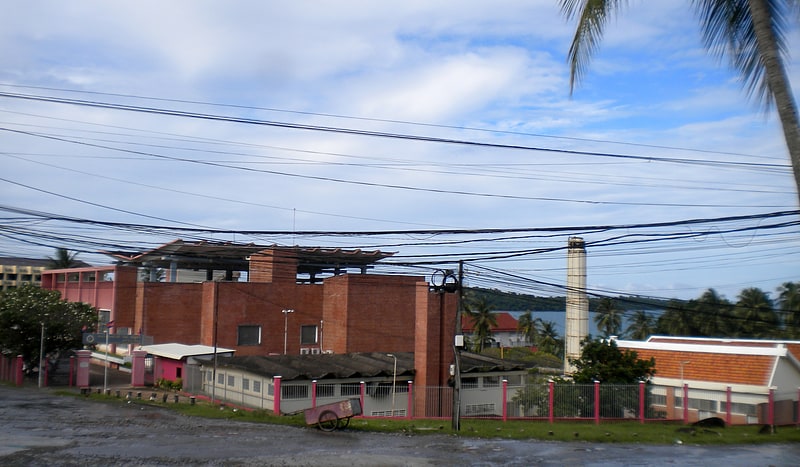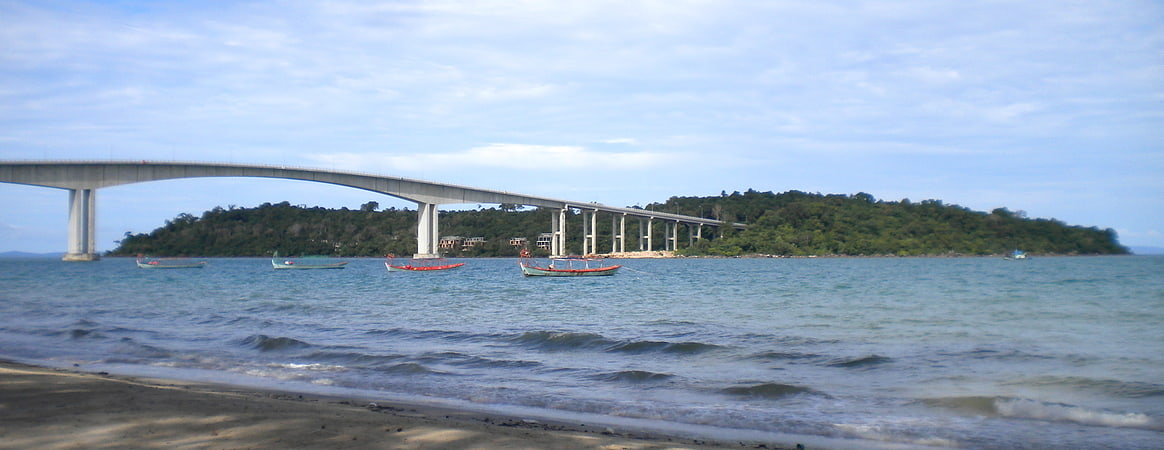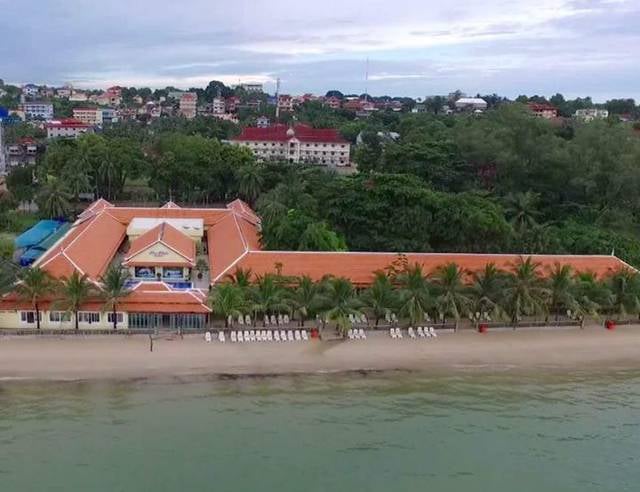Discover 5 hidden attractions, cool sights, and unusual things to do in Sihanoukville province (Cambodia). Don't miss out on these must-see attractions: Kbal Chhay Waterfall, Sihanoukville, and Otres camp. Also, be sure to include Koh Puos in your itinerary.
Below, you can find the list of the most amazing places you should visit in Sihanoukville province (Krong Preah Sihanouk).
Table of Contents
Kbal Chhay Waterfall

Kbal Chhay Waterfall is a waterfall approximately 7 km from the city of Sihanoukville in south-west Cambodia and then a further 9 km along a red dust track.
Until 1963 Kbal Chhay was a source for providing clean-water to Sihanoukville, but the arrangement ended when it became a hiding place for the Khmer Rouge.
In 1998 Kbal Chhay was developed by the Kok An Company who in constructing a road in the area developed the site for local and international tourists. Today the Royal Government of Cambodia has regained control of the site and once again uses it as a clean water source for the nearby city.[1]
Address: Kbal Chhay Waterfalls, Cambodia, 18000 Sihanoukville province
Sihanoukville

City in Cambodia. Sihanoukville, also known as Kampong Som is a coastal city in Cambodia and the capital of Preah Sihanouk Province, at the tip of an elevated peninsula in the country's south-west on the Gulf of Thailand. The city is flanked by an almost uninterrupted string of beaches along its entire coastline and coastal marshlands bordering the Ream National Park in the east. The city has one navigable river, the mangrove lined Ou Trojak Jet running from Otres Pagoda to the sea at Otres. A number of thinly inhabited islands – under Sihanoukville's administration – are near the city, where in recent years moderate development has helped to attract a sizable portion of Asia's individual travelers, students, and backpackers.
The city, which was named in honour of former king Norodom Sihanouk, had a population of around 89,800 people and approximately 66,700 in its urban center in 2008. Sihanoukville city encompasses the greater part of six communes (Sangkats) of Sihanoukville Province. A relatively young city, it has evolved in parallel with the construction of the Sihanoukville Autonomous Port, which commenced in June 1955, as the country's gateway to direct and unrestricted international sea trade. The only deep water port in Cambodia includes an oil terminal and a transport logistics facility. As a consequence, the city grew to become a leading national center of trade, commerce, transport, and process manufacturing.
Sihanoukville's many beaches and nearby islands make it Cambodia's premier seaside resort with steadily rising numbers of national visitors and international tourists since the late-20th century.
As a result of its economic diversity, the region's natural environment, and the recreational potential, an increasing number of seasonal and permanent foreign residents make Sihanoukville one of the most culturally varied and dynamic population centers in Cambodia. As of 2014 tourism remains insignificant in comparison with neighboring Thailand. Sihanoukville's future will largely be defined by the authorities' ability to successfully manage natural resources on the one hand and the necessities of urban and insular development, increasing visitor numbers, expanding infrastructure, the industrial sector and population growth, on the other.
Despite being the country's premier sea side destination, after decades of war and upheaval the town and its infrastructure remain very much disjointed and architecturally unimpressive. Infrastructure problems persist, in particular related to water and power supply, while international standard health facilities remain limited.
Sihanoukville also faces challenges related to crime, security, and safety with the city frequently being the focus of scandals linked to serious organized crime, petty crime, and corruption.
In recent years, Sihanoukville has seen unprecedented levels of Chinese investment into the city with numerous casinos having opened up throughout the city. Demographically, the city's ethnic make up has changed with thousands of mainland Chinese workers, developers and investors settling in the city much to the dismay of locals. As of 2019 nearly 80,000 Chinese live in Sihanoukville, accounting for 90% of the city's expat population. Mandarin signage is increasingly replacing Khmer and English signage in the city and crime in the form of drunken violence and organized crime are increasing. Sihanoukville is one of the major cities on China's One Belt One Road Initiative.[2]
Otres camp

Beach
Koh Puos

Island in Sihanoukville, Cambodia. Koh Puos or Kaoh Puos, Snake Island - named "Île Coudée" during the French colonial period) is a small island in the Gulf of Thailand, located about 0.63 km off the coast of Sihanoukville city in southern Cambodia. It is administered by Sangkat 3 of Mittakpheap District in Sihanoukville Province.
The island has been made accessible via a road bridge, completed in 2011 as part of a development initiative of the Russian Koh Puos Investment Group (KPIG). A long term government concession granted in 2006 was followed by large scale planning of "a high-end property project". Since, a number of project alterations and subsequent applications for permission at the Council of the Development of Cambodia have led to many delays.[3]
The Rich Club

Nightlife, Gambling, Casino
Address: Mahavithey Krong, Sihanoukville province